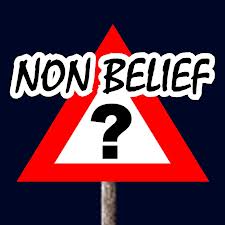
It attracted rather a lot of attention at the time, for example a CNN story on it here generated lots of comments, tweets and Facebook shares, ah but that was then and this is now, so why return to the topic? Well, basically because I wanted to add a few additional observations.
But first, to save you the effort involved in clicking a link, here is a quick reminder of their six categories … (just a summary) …
1) Intellectual Atheist/Agnostic (IAA) : 37.6%
This is where the bulk of non-belief sits within their results – basically they are individuals who have managed to think their way through to non-belief and relish knowledge and truth. They will also happily hang out and engage with other intellectuals, even if those others do not hold the same view.
In other words, if you like to go to meetups such as skeptic, freethought or science-based conventions, then this is you.
2) Activist (AAA) : 23%
The next big demographic is a category of those who are termed “activist”. They seek to be vocal and proactive about their non-belief and also related issues such as humanism, feminism, Lesbian Gay Bisexual Transgendered (LGBT) issues, social or political concerns, human rights themes, environmental concerns, animal rights, and controversies such as the separation of church and state. This might involve boycotting products, marching to raise awareness or supporting legal action.
Perhaps this is also you.
3) Seeker-Agnostic (SA) : 7.6%
These are the folks who keep an open mind to all possibilities, and … “actively search for and respond to knowledge and evidence, either supporting or disconfirming truth claims …. the majority of Seeker-Agnostics should in no way be considered “confused.” For the Seeker-Agnostic, uncertainty is embraced. ”.
Then again, you may also tick this box.
4) Anti-Theist : 14.8%
These are those who are opposed to religious ideology, see it as ignorance and … “see any individual or institution associated with it as backward and socially detrimental.”
Are you now also ticking this box, and if not this, then the next one?
5) Non-Theist : 4.4%
These are those who have no interest in religion at all, and do not get involved in intellectual pursuits that either support or oppose religion.
6) Ritual Atheist/Agnostic (RAA) : 12.5%
This last category are those that don’t believe in the supernatural, but do see value in religion and view the non-supernatural aspects as philosophical teachings of how to live life and achieve happiness, because they perceive ceremonies and rituals as producing personal meaning within life.
Apparently this last category terrifies believers, the very idea that the person sitting next to them in the pew might not actually believe is a truly scary thought for them.
OK, so what are my additional points here?
The first problem is that many non-believers can perhaps tick not just one of the above boxes, but several of them. For example, many can tick both 1, 2 and even 3 or more, so what about you, would you just tick just one and only ever one?
If not, and I suspect that is true for most, then what meaning do those percentages actually have?
My second point is that I do strongly suspect that if they did the same study again today with the exact same interviewers and interviewees, they would find that even after just three months, things will have changed. They most probably found many who ticked many boxes, and so labelled individuals with one as a way to identify the dominant thinking. That however might have been true at that moment in time, but that is also something that can rapidly change.
When making observations and measurements, unlike physical attributes, beliefs (or to be more accurate, non-beliefs) are rapidly evolving and changing. This is perhaps because the Internet exposes us all very rapidly to new ideas and thoughts, hence the very rapid change.
What is clear is that attempting to define boxes can at the best of times be very challenging, but this is not something specific to non-belief, just look at how the various beliefs rapidly fragment and splinter into an almost countless number of variations, each of which is sure that the others are wrong and that only their specific variation is the truth.
So also within the non-belief community, you have a wide diversity of labels such as skeptics, atheists, humanists, feminists, etc… However, what is rather interesting about the non-belief community is that unlike believing communities where you generally find people can only tick one box and label all others to be wrong, I find most within the non-belief community can in fact tick almost all the boxes.
So yes … while I am indeed a Skeptic, I can also happily tick the box marked “feminist”, and the box marked “Atheist”, and the box marked “Humanist”, etc… and I am not in any way unique. I can happily attend a conference or meeting that is specifically skeptical, or purely science-based, or humanist, or … well you get the idea, and in each context I feel quite at home because I’m with my people.
I suspect most feel the same, and so the attempt to pop us into distinct categories is not something that reflects this reality at all.